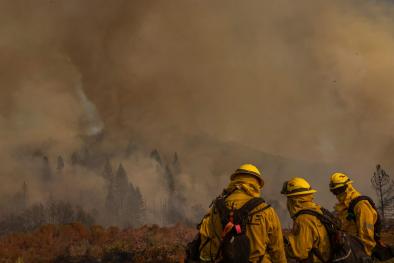Summer's heat waves could get more dangerous in the coming decades, study warns

Climate Signals Summary: Climate change is increasing the intensity, duration and frequency of extreme heat and heat waves. Exposure to extreme heat is a serious public health issue and the primary cause of weather-related deaths in the US.
Article Excerpt: Searing heat during summer days is one of the many dangerous consequences of human-caused climate change.
But when the sun goes down and there is little cooling off as day turns to night, the risks to human health multiply.
Now, a new study projects that without steps to rein in heat-trapping gas pollution, as many as three-quarters of summer days across much of the Northern Hemisphere could feature nearly around-the-clock extreme heat by 2100.
"After experiencing a hot day, people tend to expect a cool night so they can recover from the daytime heat," said two of the study's co-authors, Dr. Yang Chen and Dr. Jun Wang, in an emailed response to questions. "Compound hot extremes with daytime heat and nighttime heat occurring in close sequence deprive humans of this chance at relief."
...
The study found that already, compound extreme heat days -- when both daytime and nighttime temperatures are above the 90th percentile historically for that date -- are on the rise.
Since 1960, there are now about 5 more exceptionally hot days in the Northern Hemisphere, and these days are approximately 2.7 degrees Fahrenheit (1.5 degrees Celsius) warmer.
...
The study's authors say the increase in both frequency and intensity of these hot days and nights are mostly caused by planet-warming gas pollution from human activity -- i.e., the burning of fossil fuels and other sources.
The study found that regions that have already seen the largest increase in compound extreme heat days -- the Southern United States, Northwest and Southeast Canada, Western and Southern Europe, Mongolia, and Southeast China -- could feel even more heat in coming decades.
Recent heat waves in Europe and India have already been linked to thousands of deaths.
...
The study also found that the number of people potentially exposed to compound extreme heat days will likely increase. Even if the world evolves toward a sustainable future with moderately-reduced emissions and low population growth, the Northern Hemisphere could still see nearly a quadrupling of population exposure to hot extremes.
...
Historically, heatwaves are the deadliest extreme weather-related events -- responsible for more deaths on average than floods, tornadoes and even hurricanes, according to National Weather Service statistics.
...
Certain populations -- the socioeconomically disadvantaged, those who live alone, the elderly and those already in poor health -- are among the most vulnerable to extreme heat, according to Jane Wilson Baldwin, a postdoctoral research fellow at the Lamont-Doherty Earth Observatory at Columbia University who was not involved in the study.
"They might be in their apartment alone and the heat builds up and they don't have an air conditioner," said Baldwin. "Then, the heat stress could lead to cardiovascular or respiratory impacts that lead them to die."
Related Content



